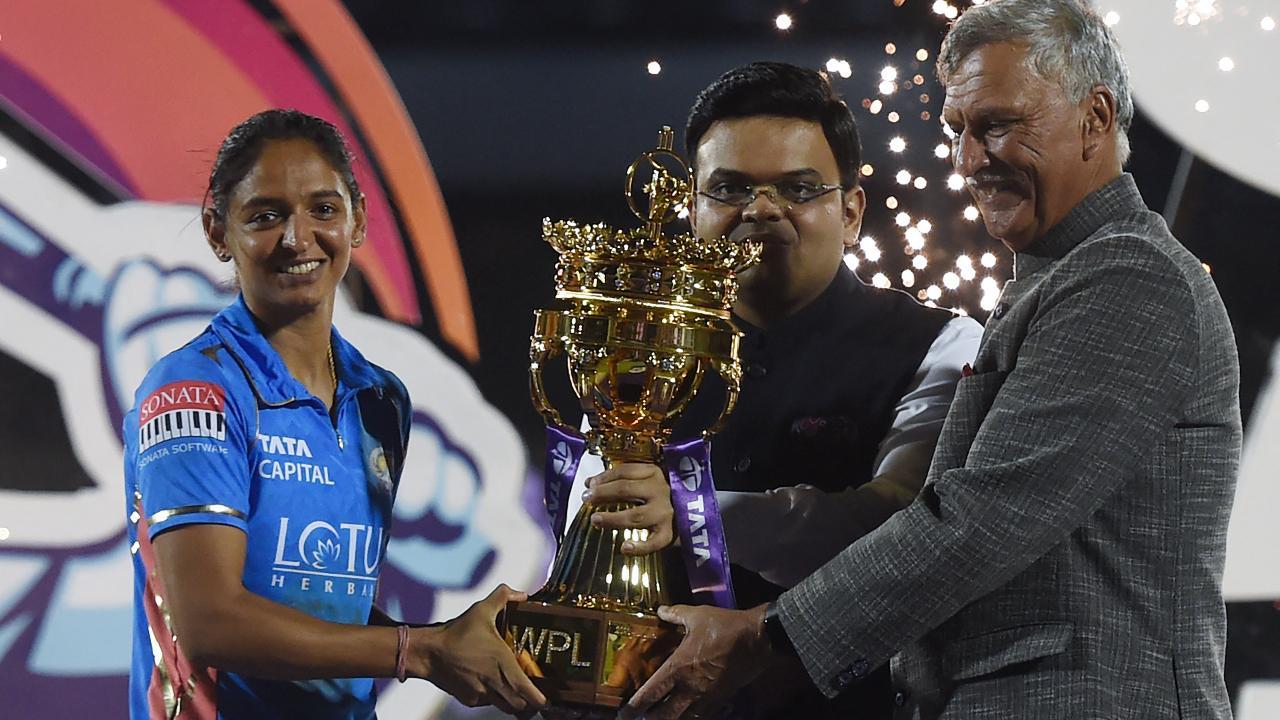All matches until March 4 will be played in Bengaluru, whereas the Arun Jaitley Stadium in Delhi will host the remaining matches of the tournament

Harmanpreet Kaur (Pic: AFP)
The Women’s Indian Premier League 2024 promises to be an exciting affair with a total of 87 players who will look forward to going in with a renewed spirit when they take on their global counterparts to stake their claim on the elusive trophy.
ADVERTISEMENT
Defending champions Mumbai Indians and last year's finalists Delhi Capitals are set to clash in a blockbuster opening match of the Women’s Indian Premier League 2024 this Friday while the final will be held on March 17. All matches until March 4 will be played in Bengaluru, whereas the Arun Jaitley Stadium in Delhi will host the remaining matches of the tournament.
The likes of Harmanpreet Kaur, Jemimah Rodrigues, and Shafali Verma will look to live up to their expectations, while adapting to pressure and arclights of a high-octane tournament like this one. A total of 87 players will be in fray, with an overall 22 matches scheduled to be played.
The inception of the Women's IPL marked a significant stride towards gender equality in the cricketing world. Historically, women's cricket had been overshadowed by the prominence of men's cricket, with limited opportunities and recognition.
Also Read: IPL takes the crown!
The WPL sought to rectify this imbalance by providing a dedicated space for women cricketers to exhibit their skills on a grand stage. This move not only recognized the prowess of female athletes but also inspired a generation of young girls to dream big in the world of cricket.
One of the key facets that set the WPL apart is its commitment to fostering talent development. The league acts as a breeding ground for emerging talents, offering them a chance to compete at the highest level and gain invaluable experience. This emphasis on youth development has a ripple effect, contributing to the overall growth and competitiveness of women's cricket globally.
It goes beyond being just a sporting event; it is a symbol of empowerment, a catalyst for change, and a celebration of women's achievements in a traditionally male-dominated domain. The WIPL has not only elevated the standard of women's cricket but has also set a precedent for inclusivity, equality, and the limitless potential of women in sports. As the league continues to grow and evolve, it will undoubtedly leave an indelible mark on the landscape of women's cricket, inspiring generations to come.
 Subscribe today by clicking the link and stay updated with the latest news!" Click here!
Subscribe today by clicking the link and stay updated with the latest news!" Click here!







